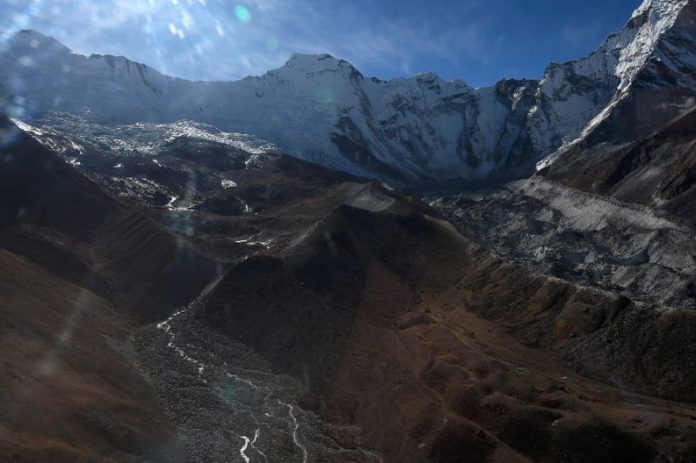KATHMANDU, Feb 4, 2019 (BSS/AFP) – Two-thirds of Himalayan glaciers, the
world’s “Third Pole”, could melt by 2100 if global emissions are not reduced,
scientists warned in a major new study issued on Monday.
And even if the “most ambitious” Paris Agreement goal of limiting global
warming to 1.5 degrees Celsius is achieved, one-third of the glaciers would
go, according to the Hindu Kush Himalaya Assessment.
Glaciers in the Hindu Kush-Himalaya (HKH) region are a critical water
source for some 250 million people in the mountains as well as to 1.65
billion others in the river valleys below, the report said.
The glaciers feed 10 of the world’s most important river systems, including
the Ganges, Indus, Yellow, Mekong and Irrawaddy, and directly or indirectly
supply billions of people with food, energy, clean air and income.
Impacts on people from their melting will range from worsened air pollution
to more extreme weather, while lower pre-monsoon river flows will throw urban
water systems and food and energy production off-kilter, the study warned.
It was published by the Kathmandu-based International Centre for Integrated
Mountain Development (ICIMOD) in Nepal, one of eight countries on the front
line.
Five years in the making, it involved more than 350 researchers and policy
experts, 185 organisations, 210 authors, 20 review editors and 125 external
reviewers.
“Global warming is on track to transform the frigid, glacier-covered
mountain peaks… cutting across eight countries to bare rocks in a little
less than a century,” Philippus Wester of ICIMOD said in a statement.
“This is the climate crisis you haven’t heard of.”
– Thinning, retreating –
The 2015 Paris Agreement’s central aim was to keep a global temperature
rise this century well below two degrees Celsius above pre-industrial levels
and to pursue efforts to limit the temperature increase even further to 1.5
degrees Celsius.
In December, world leaders at the COP24 talks in Poland agreed on a common
rule book to implement the accord, in which countries committed to limiting
global temperature rises to well below two degrees Celsius.
But major polluters, including the United States and Saudi Arabia, disputed
a landmark scientific report released in October that suggested nations must
slash fossil fuel use by nearly half in a little over a decade.
The new report said that even if the 1.5-degrees target is achieved, it
would mean a rise of 2.1 degrees in the Himalayas region. If emissions are
not reduced, the rise would be five degrees.
The Himalayan glaciers, formed some 70 million years ago, are highly
sensitive to changing temperatures. Since the 1970s, they have thinned and
retreated, and areas covered by snow and snowfall have decreased.
As the glaciers shrink, hundreds of risky glacial lakes can burst and
unleash floods.
Satellite data shows that numbers of such lakes in the region grew to 4,260
in a decade from 3,350 in 1990.
Air pollution from the Indo-Gangetic Plains — one of the world’s most
polluted regions — also deposits black carbon and dust on the glaciers,
hastening melting and changing monsoon circulation, the ICIMOD study said.
The region would require up to $4.6 billion per year by 2030 to adapt to
climate change, rising to as much as $7.8 billion per year by 2050, according
to an estimate in the report.



